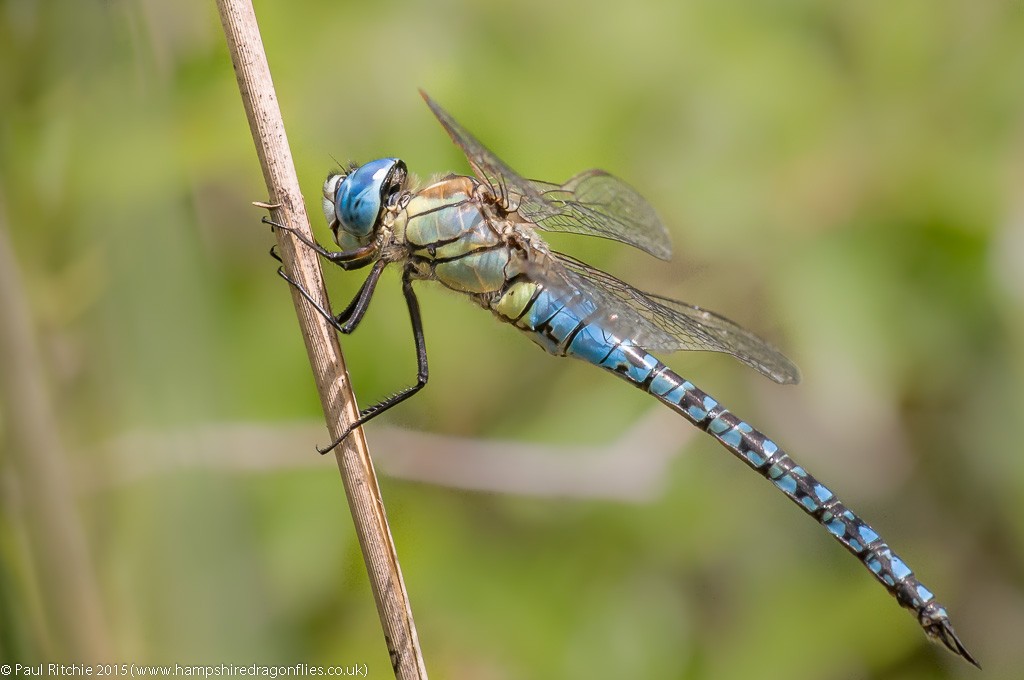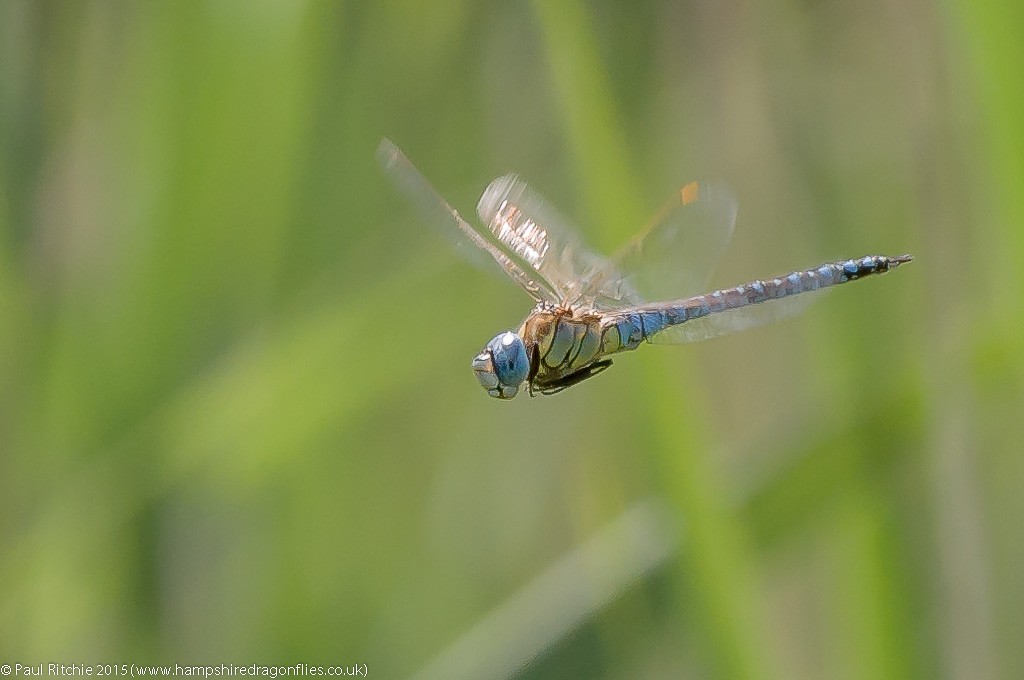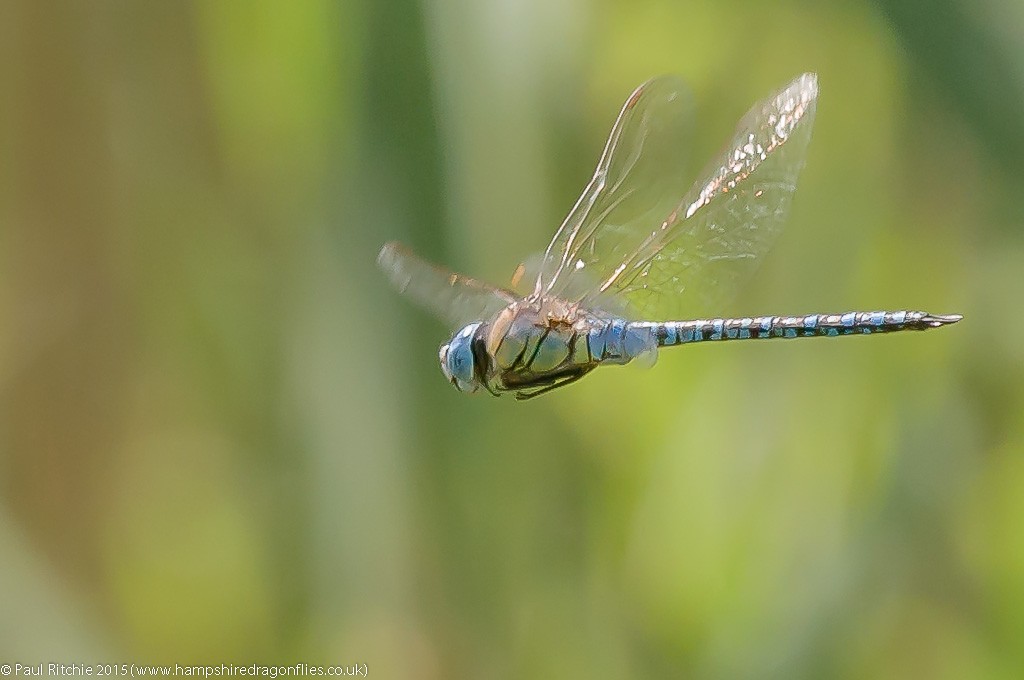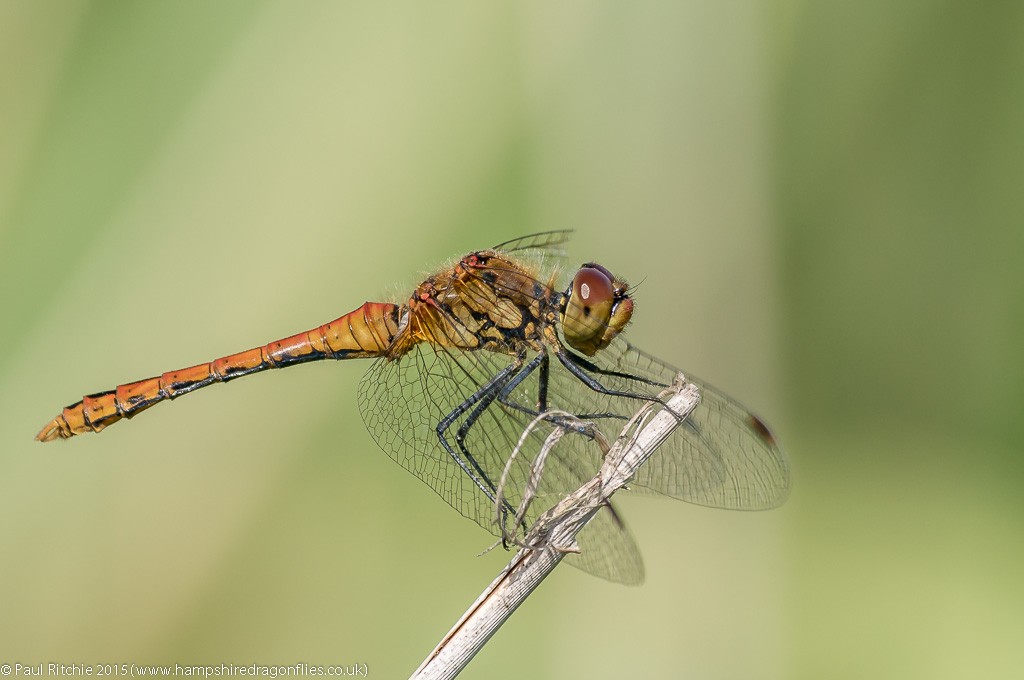Saturday 1st August
A discussion on Friday night decided a road-trip was on the cards. An ideal opportunity for a ‘twitch’. Neil Phillips had announced the return of the Southern Migrant Hawker at Wat Tyler Park, a place I had avoided previously because I dislike ‘country parks’ and dislike twitching even more 😉
The difference here is, as with the Green-eyed Hawker, the continued residency of a species at a given site over the course of many seasons means it’s not exactly a twitch in the true sense of the word.
If you’re after further controversy, I prefer to call this beast by the standard European name Blue-eyed Hawker, not least because it’s given English moniker is confusing and non-descriptive. Besides, it winds up the status quo!
Wat Tyler was extremely easy to find and not as bad as I’d imagined. Sure, it was full of local families out for a day in the park with the expected inconveniences and high noise levels of happy (or indeed unhappy) children, but you could say the same about twitchers!
The key area was centered around the boardwalks and the ponds. Indeed, it was at the first boardwalk that we encountered our first by the crowd of observers aiming binoculars into the lower reaches of the reeds.
Anxious to explore a little, I followed a friendly regular who led me to the pool with the ramp where one was posed quite conveniently surrounded my several photographers. Naturally I joined in, finding a niche out of the way of others lenses, crouching down to get the best angle I could.

In the bag then! A beautiful species for sure. Surprisingly tolerant of nosy humans, as most rarities seem to be, he simply got on with his business until he felt it was time to explore himself. Now I could relax, and continued around the site, stopping frequently to observe the fabulous overhead display of sometimes up to three individuals at once.
The first one along the boardwalk had now risen and was giving a fine showing circling the boardwalk, sometimes flying along the path in similar curiosity shown by Southern Hawkers.
Over on the other side of the road is another short boardwalk lined with emergent plants populated with a range of butterflies. It was here we had our own fine display by a male basically showing off.
There was news of a few males on the small pond next to the car park, so I found a vantage point, at first already occupied but graciously passed on allowing me to attempt some in-flighters.

This pond I presume is the one which has initiated the stern warning regarding the surrounding reeds, asking people to keep to the paths and avoid destroying the habitat to get a better view.

According to the book these almost dry ponds heavily choked with bull-rushes and the like are exactly the environment preferred by the Blue-eyed Hawker. However a choked pond is counter-productive to diversity, as was evident by the very poor populations of other odonata.
Besides the occasional showing of a Southern Hawker, a Migrant, an Emperor, a couple of Common and Ruddy Darters and very few Blue-tailed, the cupboard was bare. Some discrete management of these ponds will go a long way to increasing the diversity without driving off the Blue-eyed Hawker.
It will also allow observers to get a better view without resulting to environmental vandalism. Everyone’s happy, especially the dragonflies. There are several examples where this balance works.
Anyway, back to those Hawkers. After the first late morning flux of activity, further outbreaks became more sporadic. There were a few more overhead showings in the afternoon, with the boardwalk opposite offering the quietest experience and the best displays.
I even had a pristine Clouded Yellow fly through, and a patient Ruddy offered myself and Jeff, a fellow I’ve previously met at Latchmore, a welcome opportunity to round off the day.

A new month and a new species. Here’s to August!
